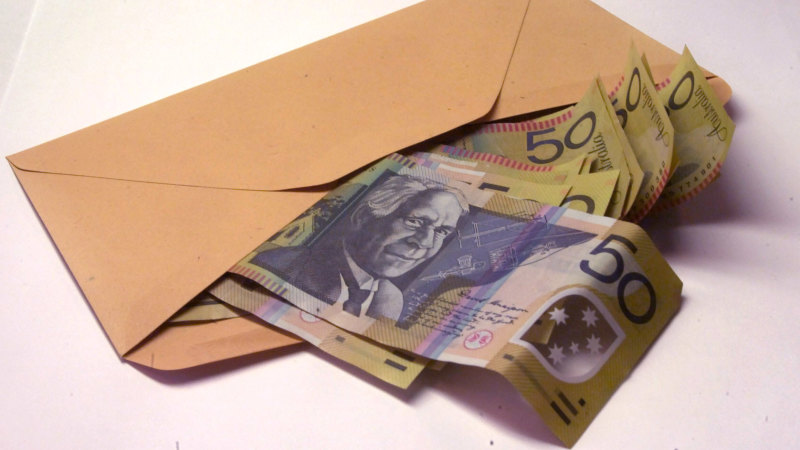Stuff it: Millennials return to cold hard cash in a bid to save money
Save articles for later
Add articles to your saved list and come back to them any time.
Millennials are turning to one of the most traditional forms of saving in a bid to adopt better money habits in the face of the cost of living crisis.
Known as “cash stuffing”, the trend involves withdrawing your wage from the bank weekly or monthly and allocating wads of cash into various folders or envelopes representing a specific spending category, such as petrol, groceries and insurance.
Stashing $30 a week into an envelope to cover the cost of car insurance means that when the annual bill rolls around, the cash is already set aside. It’s supposed to be a form of discipline because you can only spend cash, helping avoid unnecessary debt.
Nikki Madgwick, who says she took holidays rather saving for a home, now uses cash binders as a saving technique.
The visual representation flips the concept of a cashless society on its head and revives a saving technique from generations ago. The sale of cash binders specifically designed for this budgeting technique has boomed on the back of the trend.
Melbourne’s Julietta Routley began selling personalised cash binders online a year or so ago and has seen sales grow threefold.
“The vast majority of people I sell to are just saving for things like rent and groceries, but some are saving for life events, like a wedding,” she says.
‘Cash stuffing suits me so much more than trying to look at a spreadsheet.’
Nikki Madgwick bought a cash binder from Routley as a savings tool on the cusp of her 30th birthday. She admits she took holidays rather than bothering with a home loan in her youth.
“I looked around at my friendship circle and realised they all had loans and were getting ahead in life, and I knew it was time for me to start taking my own finances more seriously,” the Melburnian says.
But it wasn’t until a night scrolling on Instagram that she found the missing piece of the puzzle.
“I came across a woman talking about cash stuffing her weekly income into different envelopes, and I was instantly curious. I’m a very visual person, so the ability to divide my income up into segments really appealed to me,” she says.
“It felt daunting to even think of creating a budget. I used to think that as long as you had enough to cover bills and enjoy your life, then that’s enough. Cash stuffing suits me so much more than trying to look at a spreadsheet.”
Working out her spending categories and labelling each envelope revealed opportunities to save. She loves crafting in her spare time, so throws a few coins in an envelope each week.
Madgwick also deposits money in the bank for a home deposit. Every time that grows to $1000, she prints and laminates a $1000 note and stashes it in her binder as a visual representation of her bank. It’s early days, but she’s already managed to save just over $1500 and still has cash left over for the little luxuries.
There’s also a psychological aspect to the trend, helping demonstrate the foundations of saving. Financial therapist Jane Monica-Jones reckons it’s a good thing that more young people are starting to have a more rigour around their spending.
“People tend to become more resourceful during times of economic hardship. We can’t always be in a state of summer and spring. Sometimes we do need to go into winter and autumn and have a period of contraction,” she says.
However, she cautions against jumping onto a new savings fad that might not serve your approach to money. Cash can also get lost or stolen, too, and the trend also makes online payments tricky.
“People shouldn’t take a cookie-cutter approach to financial wellbeing. If it doesn’t work for you, adopt another method,” Monica-Jones says.
- Advice given in this article is general in nature and is not intended to influence readers’ decisions about investing or financial products. They should always seek their own professional advice that takes into account their own personal circumstances before making any financial decisions.
The Morning Edition newsletter is our guide to the day’s most important and interesting stories, analysis and insights. Sign up here.
Most Viewed in Money
From our partners
Source: Read Full Article


